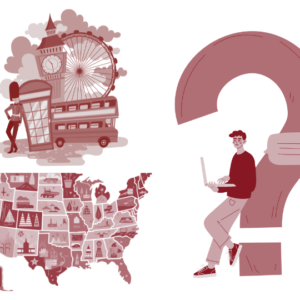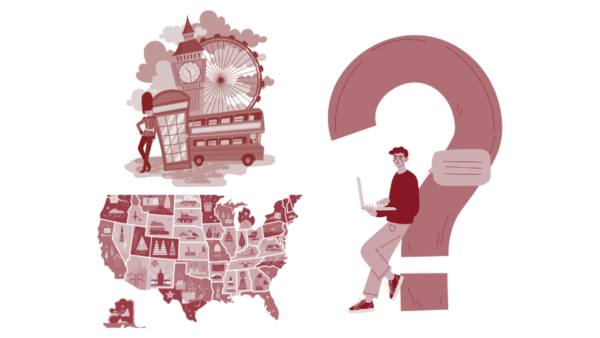Necessity, goes the famous saying, is the mother of invention. In the past month, as Coronavirus has brutally raged through this planet, innovation has become key to the survival for many businesses.
The education space, which has been one of the worst hit areas, is a case in point. Students, world over, have been impacted, as institutions have scrambled to set up infrastructures to provide remote teaching. While the concept of distance learning is not new, the scale is. It’s one thing to offer few courses online, it’s quite another to switch to online as the only medium of teaching. Also, this is not about the universities alone – students too have been caught off guard. Not everyone has systems in place for taking classes online.
All that is changing as we speak. The speed at which institutions are trying to bring about a change is dizzying. Those who were already ahead of the curve are finding it relatively easy to make the massive switch. One such example is Zhejiang University (ZJU) – that caught the bull by the horns and attacked the problem head-on.
Zhejiang University (ZJU), one of the oldest Chinese universities with seven campuses across Eastern China, was one of the first to respond to the lockdown caused by COVID-19. It created, what’s being called, the world’s largest remote learning experiment.
What was commendable to see is how ZJU adopted a 360 degree approach – because it did more than just go online. It looked into, and created solutions for, every possible aspect of online learning – from reaching students and conducting faculty trainings to addressing network issues and finding ways to level the digital divide.
On the 24th of February ZJU went completely online. It started remote classes for all their students – including international ones. Some two weeks later, 5,000 courses had been made available online. Their live streaming app, called DingTalk ZJU, which was co-developed by Alibaba, had 300,000 people using it. That’s not all – in an effort to deliver quality lectures and help faculty manage the virtual classrooms, ZJU ran a number of training sessions for more than 3,500 faculty staff. What’s more, the university thought about the lesser privileged students and created systemic, multipronged solutions around the issue. Firstly, it funded access to more than 1,000 students who were not in a financial position to access the classes online. Then it worked with network providers to provide data plans to its staff and students at a subsidized rate. They didn’t stop there – they made the recordings of the coursework and lectures available to students who, despite their efforts, could not be online during the live streaming of the classes. The efforts paid off – but only because they already had a head start.
As mentioned earlier, those who were ahead of the curve in terms of online infrastructures and technical preparedness have found it easier to make the transition to get students online and carry on classes. ZJU had already started creating a smart campus a few years ago, which is what enabled them to scale up quickly when Coronavirus unleashed its terror.
ZJU, of course, is not alone in making the switch. Universities, all over the world, are moving classes online – some with more success than the others, depending on where they were in the online curve. In the US alone, 150 universities are now offering classes online. In the UK as well, Zoom session are powering up in student rooms, as they get used to the new way of learning. For the most part, it seems to be working.
What’s suffering, however, is the human side. Learning is all very well, but what of the human price? Students don’t go to university for learning alone, they go for the whole experience of living and being with people with varied backgrounds and interests – peer bonding is an integral part of campus life. While technology has (or is) solving the first part, the other is suffering. Meeting your teachers and fellow students virtually, no matter how great an internet connection, is just not the same as a face-to-face interaction. So while online learning is a great solution, students are lamenting the loss of peer camaraderie – it’s lonely to stare at a computer screen sitting alone in a room. Social isolation is hard.
The other big challenge that students and universities are facing is that of unequal online access. Not all students have access to great internet speeds. As many students are finding out after leaving their dorms, the learning experience out of the university ecosystem can be a challenge – with choppy internet and no access to libraries and printers. International students are the hardest hit, because they completely depend on the universities for survival. It’s something institutions will have to think about as they recalibrate their entire teaching solutions – how do they ensure all students have largely similar learning experiences.
The flattening of the curve will eventually happen and COVID 19 will go – when no one can say – but go it will. And when it does, it will leave behind a different world. It will irreversibly change the way we work and learn. Institutions that haven’t developed an online strategy will be forced to create one and companies will have to think about developing remote ecosystems and managing people. All this was already in the making – probably on track for 2040. COVID 19 just gave it a final push and the world tumbled twenty years into the future.







![Best Universities in New Zealand for International Students [2025 Rankings]](https://tcglobal.com/wp-content/uploads/2025/09/Best-Universities-in-New-Zealand-for-International-Students-2025-Rankings-600x338.png)